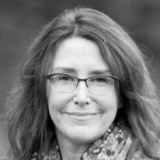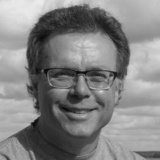Eastern Gulf of Finland shows signs of recovery as St Petersburg reduces nutrient loads

By Michelle McCrackin, Researcher, Baltic Eye, and Bo Gustafsson, Director of Baltic Nest Institute, Sweden
Russia has dramatically reduced its nitrogen and phosphorus emissions into the Gulf of Finland through improved wastewater treatment in St Petersburg. As a result of reduced nutrient loads, there are signs of recovery from eutrophication in the easternmost areas. However, the Gulf as a whole remains eutrophic. To realise the full environmental benefits of St Petersburg’s improved wastewater treatment in the Gulf of Finland, as well as to other regions of the Baltic Sea, requires further reductions in nutrient loads from other land-based sources, such as agriculture.
Human inputs of nitrogen and phosphorus to the Baltic Sea are responsible for the eutrophication, whyich is apparent in algal blooms, reduced water clarity, changes in species composition, and reduced oxygen concentrations in bottom waters. Over the past century, nutrients in sewage and industrial wastewater and fertiliser and manure runoff from agricultural land have contributed to the symptoms of eutrophication we see today.
A number of measures have been taken to improve the environmental status of the sea, including the HELCOM Baltic Sea Action Plan (BSAP). The BSAP is an ambitious programme that established country-level nutrient reduction targets to achieve a Baltic Sea unaffected by eutrophication. Substantial progress has been made in reducing land-based nutrient inputs to the sea. Since the mid-1990s, land-based nitrogen loads have decreased by 19%, and phosphorus loads have decreased by 24% (read more).
For the Gulf of Finland, a large proportion of the nutrient reductions is the direct result of investments in wastewater treatment infrastructure in St Petersburg. The investments have helped reduce nitrogen emissions from the city by 40%, or 5,600 tonnes, and phosphorus emissions by 85%, or 2,000 tonnes, in the past 20 years. As a result of these measures, Russia has achieved about 90% of its phosphorus reduction target for the Gulf of Finland.
Further reductions in nutrients from north-west Russia are possible (read more) by improving sewage treatment in small municipalities and reducing leakage from intensive livestock operations. There are also opportunities to reduce nutrient emissions from Finland and Estonia, especially in agriculture; however, further effort is needed to identify specific measures that could meet the phosphorus targets for these countries.
There are signs (read more) that reductions in sewage nutrients from St Petersburg have improved eutrophication conditions in the easternmost part of Gulf of Finland. One notable improvement is the reduced abundance of cyanobacteria, a type of algae that can form toxic blooms and nuisance blooms. Scientific assessments (read more), however, have found that conditions for the entire Gulf have not improved as might have been expected from the reductions in land-based phosphorus emissions. The situation in the Gulf of Finland is not unique; more than 95% of the Baltic Sea still shows symptoms of eutrophication despite substantial nutrient reductions.
This situation highlights a frustrating aspect of eutrophication management: recovery takes time, and the large interannual variability obscures progress. For the Gulf of Finland, wind and water currents transport phosphorus-rich and oxygen-poor water (read more) from the Baltic Proper to the Gulf. This also modulates the internal recycling of nutrients from the sediments. Together, these processes largely mask the effect of the nutrient reductions, including sewage effluent from St Petersburg.
To realise the full environmental benefits of improved wastewater treatment in St Petersburg, land-based nutrient emissions into the sea must decrease further, especially for the Baltic Proper. Here, meeting the BSAP targets (read more) requires a 22% reduction in nitrogen loads (90,000 tonnes) and a 58% reduction in phosphorus loads (10,000 tonnes), including a margin to take into account uncertainty.
There is a substantial opportunity to reduce nutrient leakage from agriculture into the Baltic Proper. In this region, only about 60% of the nitrogen and phosphorus in fertiliser and manure are converted to harvested crops. This inefficiency is particularly evident in areas with intensive livestock operations, and increases the risk of nutrient losses to both inland waters and the sea. Thus, measures that increase manure recycling efficiencies or reduce livestock densities could have substantial benefits.
Investments in sewage treatment infrastructure are still playing a critical role in reducing nutrient emissions into the Baltic Sea. The environmental effects of these measures are not yet apparent due to natural time lags. It took decades for the Baltic Sea to become eutrophic, and it will take decades to recover. Agriculture is the largest anthropogenic source of nutrients entering the sea, and reducing leakages from this source is needed to meet to the goals of the BSAP.

Michelle McCrackin
Researcher at Baltic Eye, Stockholm University Baltic Sea Centre (Sweden)
Biogeochemist interested in how agriculture, urbanisation, energy production, and land use change have influenced nutrient cycling in watersheds.

Bo Gustafsson
Director of the Baltic Nest Institute (Sweden)
He holds a PhD in physical oceanography from Gothenburg University and has over 20 years experience of scientific research on the Baltic Sea.